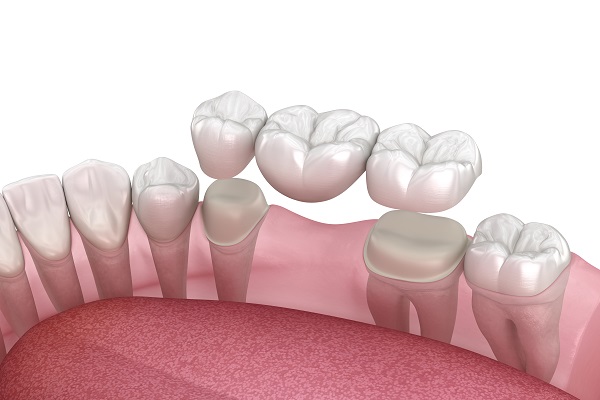Getting a Dental Bridge with Your Supporting Teeth

A dental bridge is an option for those who have lost teeth and need to fill in that space to complete their smile or bite. The procedure involves crowns being placed on supporting teeth (known as abutment teeth) that are fused with your missing tooth or teeth by what's called an implant post. The tooth-replacement option, known as a pontic, is then cemented into place on top of these crowns to complete your new smile. Please keep reading to understand what a bridge is, who should get one, and what it's like.
What is a dental bridge?
A bridge is an indirect form of replacement for missing teeth. This option may be better than removable dentures in certain situations, such as when one or more of your teeth are slightly longer than others. Bridges use natural teeth on either side of a gap to anchor artificial replacement teeth in place.
With bridges, you'll have teeth on either side of your missing tooth that is fixed in place. On one side, a dentist will fabricate two crowns for two teeth—one in front and one behind. Then they will attach artificial teeth to these crowns. On the other side of your mouth, there will be another pair of false teeth permanently bonded onto two natural teeth.
Why get a dental bridge?
A bridge might be your best option if you have one tooth that's damaged or decayed, but all your healthy teeth are still in place. Bridges are relatively easy to maintain and can give you back many of your natural smile's characteristics—they're also often less expensive than full dentures.
This can give you back a lot of your old smile's characteristics. In some cases, you won't even need to make any major changes to your current bite. The dentist will build your bridge so that it fits on top of your healthy teeth, securing it with metal clasps that attach to existing teeth or implants. The dentist might also recommend having some slight alterations made to your bite.
Is there any pain after?
You may have some soreness and discomfort after receiving your new bridge. This is normal, as you are working with your jaw to adjust. To help speed up your recovery time and make you more comfortable, consider taking over-the-counter pain relievers like acetaminophen or ibuprofen after you get your new bridge in place. It's also important that you regularly brush and floss your teeth during recovery. Remember, it's normal to experience some soreness after getting a bridge replaced, so relax and allow yourself time to adjust.
Learn more from your dentist
A bridge is made from biocompatible materials and can be expected to last for years. Because bridges connect two natural teeth, they look like your own teeth, which makes them perfect for improving your smile. However, a bridge requires careful planning and professional execution to last. It may take multiple visits before you can get one installed. Take time to learn about them, so you're confident in deciding whether it's right for you.
Request an appointment here: https://summitdentist.com or call Summit Dentist at (908) 698-4229 for an appointment in our Summit office.
Check out what others are saying about our dental services on Yelp: Dental Bridges in Summit, NJ.
Related Posts
Dental bridges are a reliable solution for replacing missing teeth and restoring a complete smile. With several types available, it is important to understand the options and choose the one that best meets your needs. A general dentist can explain the different types of bridges and guide you toward the most appropriate choice.Dental bridges are…
Dental bridges offer a reliable and effective solution for replacing missing teeth. A missing tooth, whether caused by injury, decay, or other dental issues, can impact the health and appearance of your smile. Fortunately, dental bridges can help restore your oral health. Here are five benefits of choosing dental bridges as your tooth replacement option.Dental…
A dental bridge is a method of replacing one or more lost teeth. People often use the word bridge to indicate a removable tooth replacement option, but dentists have a different opinion. Dental professionals consider bridges as a device that attaches to the teeth permanently and is not removable — at least not by patients.…
Individuals suffering from damaged or unsightly teeth may benefit from receiving dental crowns. This straightforward and relatively common procedure can help restore the look and function of healthy, natural teeth. While a variety of components may be used to form dental crowns based on the patient's individual preferences and needs, the installation process is usually…


